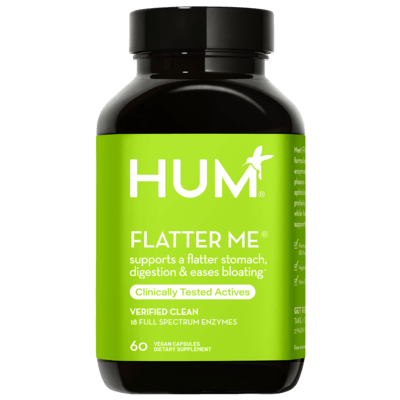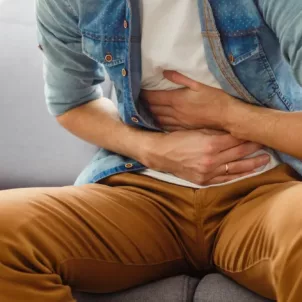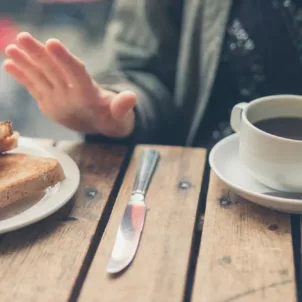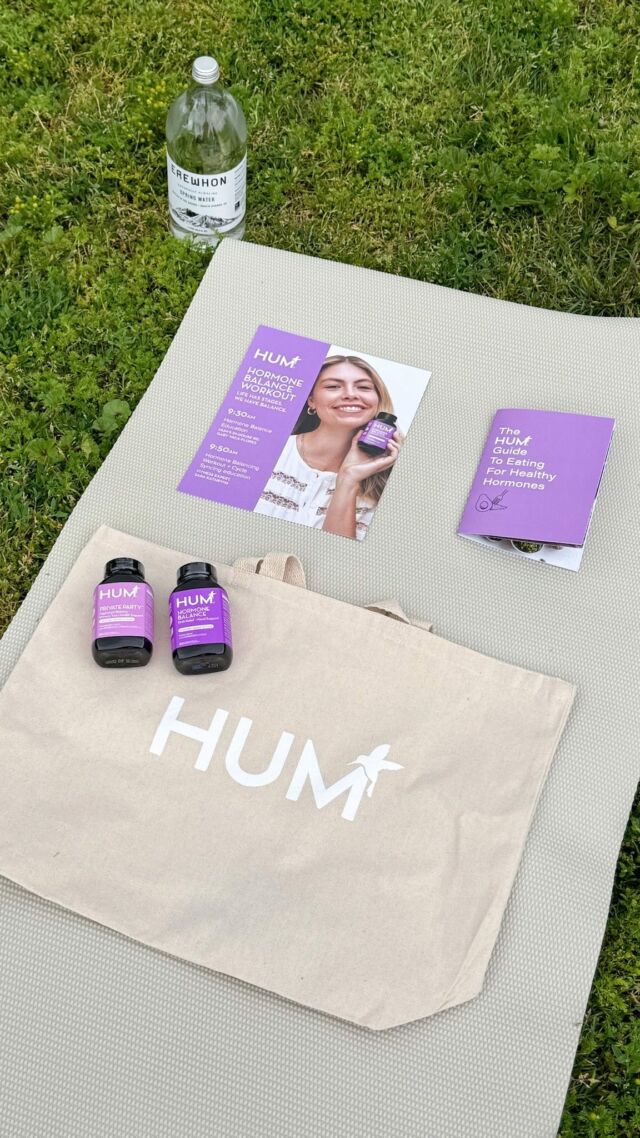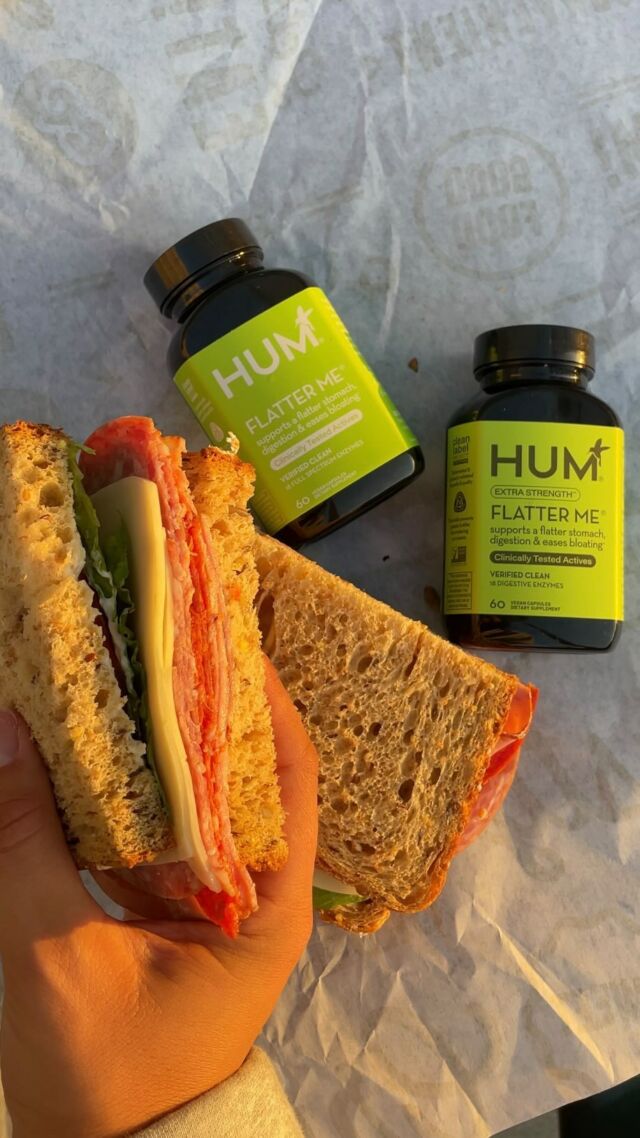Battling bloat? Chelsey Amer, MS, RDN, CDN, shares the top 10 foods that help with bloating.
If you occasionally experience that *must unbutton your pants ASAP* feeling, you’re not alone! Bloating is a common complaint with various causes.
Here’s a simple guide to the main causes of bloating, followed by the best foods that reduce bloating and gas.
What Causes Bloating?
As unique individuals, we each have our own triggers that can instigate bloat. That said, there are two common mechanisms that cause bloat: water retention and gas buildup.
1. Water Retention
When you feel full and puffy all over, you’re likely retaining water. Your body may retain water for various reasons, including:
- eating a very salty meal
- hormone fluctuations
- dehydration
Water retention is often felt all over your body—not just your abdomen. For example, the rings you can easily slip on your fingers on most days may feel tight when you’re retaining water.
Plus, we all have a unique level of salt sensitivity. If you’re especially sensitive to salt, it’s important to be cautious of salt added to foods.
Then, to de-puff, it’s essential to flush out excess water.

2. Gas Buildup
If your belly balloons and feels uncomfortable—especially after eating—you may be prone to producing excess gas.
Several foods can lead to excess gas, including:
- cruciferous veggies
- beans + lentils
- dairy products (milk, cheese, yogurt)
- high-FODMAP foods or fermentable carbohydrates
- highly fiber-rich foods
- carbonated beverages
- artificial sweeteners + sugar substitutes
Your belly can also swell from eating habits that cause you to swallow excess air, such as:
- drinking through a straw
- chewing gum
- talking while chewing
If you’re prone to constipation or have an imbalance of bacteria in your gut, you may experience more bloating as well.
But luckily, gas typically passes within several hours.
10 of the Best Foods for Bloating
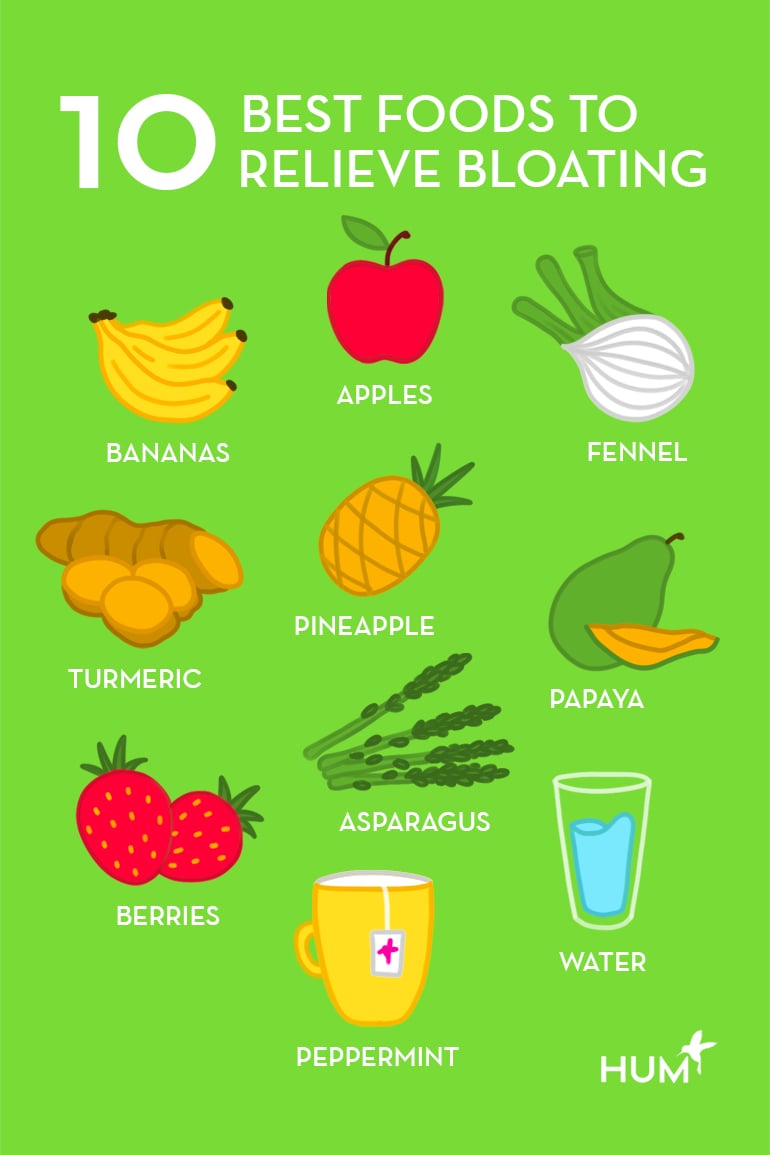
Depending on the type of bloat you’re experiencing, different foods may be helpful to reduce the sensation.
Overall, foods that help with bloating:
- have high water content
- are rich in potassium and fiber
- are low in sodium
Try adding one or more of the following best foods for bloating to your diet to see if your digestive symptoms abate.
1. Fennel seeds
Fennel seeds don’t just add delicious licorice-like flavor to your food, but can help relieve bloating too. In fact, people all around the world chew on fennel seeds after eating to help promote good digestion for several reasons.
Fennel seeds soothe the digestive tract by relaxing the muscles and reducing spasms that can cause gas.
Fennel is also a natural diuretic, helping rid your body of excess water. Moreover, fennel seeds pack a powerful punch of fiber to help promote regularity. (For reference, one tablespoon contains over two grams of fiber.) Studies also show that fennel is antimicrobial, helping keep harmful gut bacteria at bay.
Tip: Add fennel seeds to your meals or chew them in place of an after-dinner mint.
2. Papaya
Papaya is rich in papain, a well-known digestive enzyme that helps break down fiber and protein, thus easing digestion and reducing bloating.
Papain specifically helps individuals with gluten sensitivity, since gluten is a protein found in wheat, barley, and rye.
Tip: To beat the bloat, try having papaya after protein-rich meals. We like this papaya smoothie as a digestif.
3. Pineapple
Pineapple is another tropical fruit that can help ease digestive discomfort.
It’s rich in the enzyme bromelain, which also helps protein digestion. Plus, pineapple is lower in bloat-inducing fructose (naturally occurring fruit sugar) than many other fruits.
Unfortunately, eating pineapple daily isn’t a cure-all. Most of the bromelain in pineapple is found in the stem, which is why a dietary supplement, like Flatter Me, can help.

4. Peppermint tea
Sipping a hot beverage after a meal can be a calming way to end a meal—but to enhance the de-bloating effects, try peppermint tea specifically.
Peppermint can help:
- soothe your digestive tract
- stimulate digestive juices
- combat nausea and indigestion
Note: Peppermint exacerbate reflux, so if you experience it, avoid peppermint as your bloat-busting remedy.
5. Turmeric
Curcumin, a phytochemical found in turmeric, has anti-inflammatory properties that make it a popular remedy in Eastern medicine.
Specifically, curcumin is known to target abdominal pain and bloating.
Tip: Turmeric is popular in curry dishes, but you can also add it to soups, stews, roasted vegetables, and more for an extra layer of flavor and bloat prevention.
6. Asparagus
Asparagus is a well-known diuretic, meaning it helps flush excess water out of your body. That’s thanks to the amino acid asparagine.
If you’re feeling puffy all over or had a particularly high-salt meal, eat this food that helps with bloating at your next meal to flush out excess fluid.
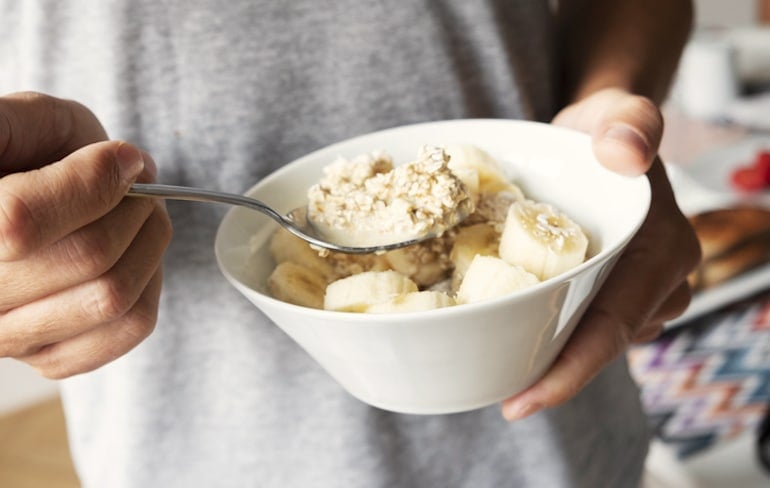
7. Bananas
Rich in potassium, bananas can actually help you de-bloat if you’re retaining water (and maybe had your hand in the pretzel jar last night).
How? Potassium is considered the antidote to sodium in your body. If you’ve had a bit too much salt lately, increasing your intake of potassium-rich foods can help flush out excess water.
Bananas aside, the best foods for bloating that are also high in potassium include:
- sweet potatoes
- broccoli
- oranges
- lentils
8. Berries
Fiber is an indigestible carbohydrate that creates bulk in your stool. However, most Americans only reach half of their daily fiber recommendations of 25 to 35 grams per day.
If you’re backed up, boosting your fiber intake can help move things along your digestive tract. Berries are one of the highest fiber fruits you can add to your diet, thus making it one of the best foods for bloating.
Other high-fiber foods to eat to reduce bloating include:
- fruits + veggies
- whole grains
- beans + lentils
Tip: As you increase your fiber intake, make sure to stay hydrated, too.
9. Apples
When it comes to bloat, apples are a double-edged sword. For some, their high water content and soluble fiber can help improve digestion while reducing bloating and gas.
Apples contain a unique fiber called pectin, which with water forms a gel in the large intestines. This can help reduce sluggish digestion and quicken evacuation.
On the other hand, apples are a high-FODMAP food, which can cause excess gas and bloat in some individuals. If you’re sensitive to fructose and polyols (two types of FODMAPs), you may wish to steer clear of apples.
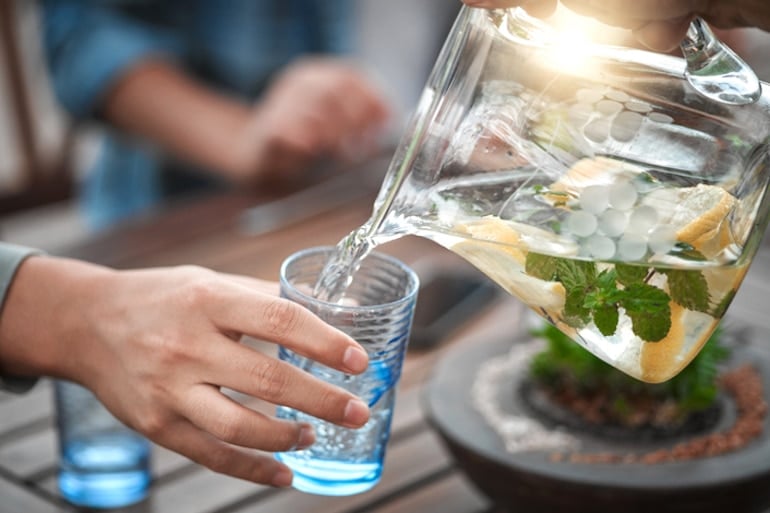
10. Water
Lastly, let’s not underestimate the power of good old hydration to help you de-bloat. Even if you feel full, drinking water can help flush out excess sodium, which we saw can contribute to bloat.
Plus, water helps you have regular bowel movements. If you’re not adequately hydrated, it’s more difficult to go to the bathroom—even if you’re eating enough fiber.
Final Thoughts
In addition to eating the best foods for bloating, try to slow down when you eat. The faster you eat, the more air you swallow. Plus, it’s hard to listen to your internal fullness signals when you eat quickly. Moreover, overeating is another common cause of bloat.
If you consistently struggle with bloating, you may benefit from a digestive support supplement regimen too.
Gut Instinct and Flatter Me are a great combination to increase good bacteria in your intestinal tract and help break down your foods when you eat a meal, respectively, improving digestion and your comfort.
